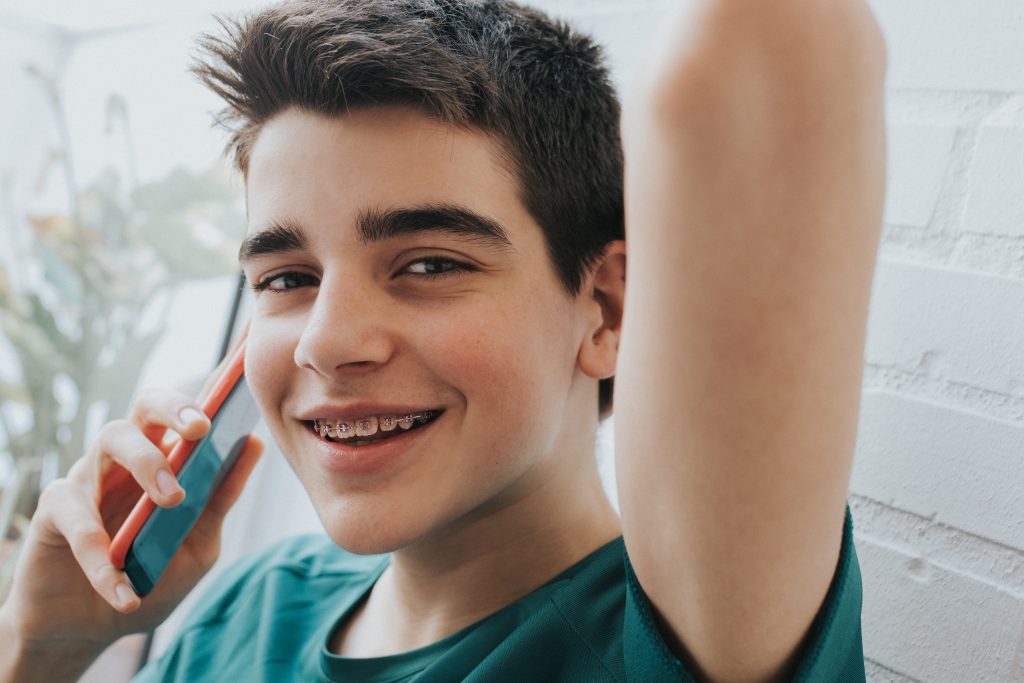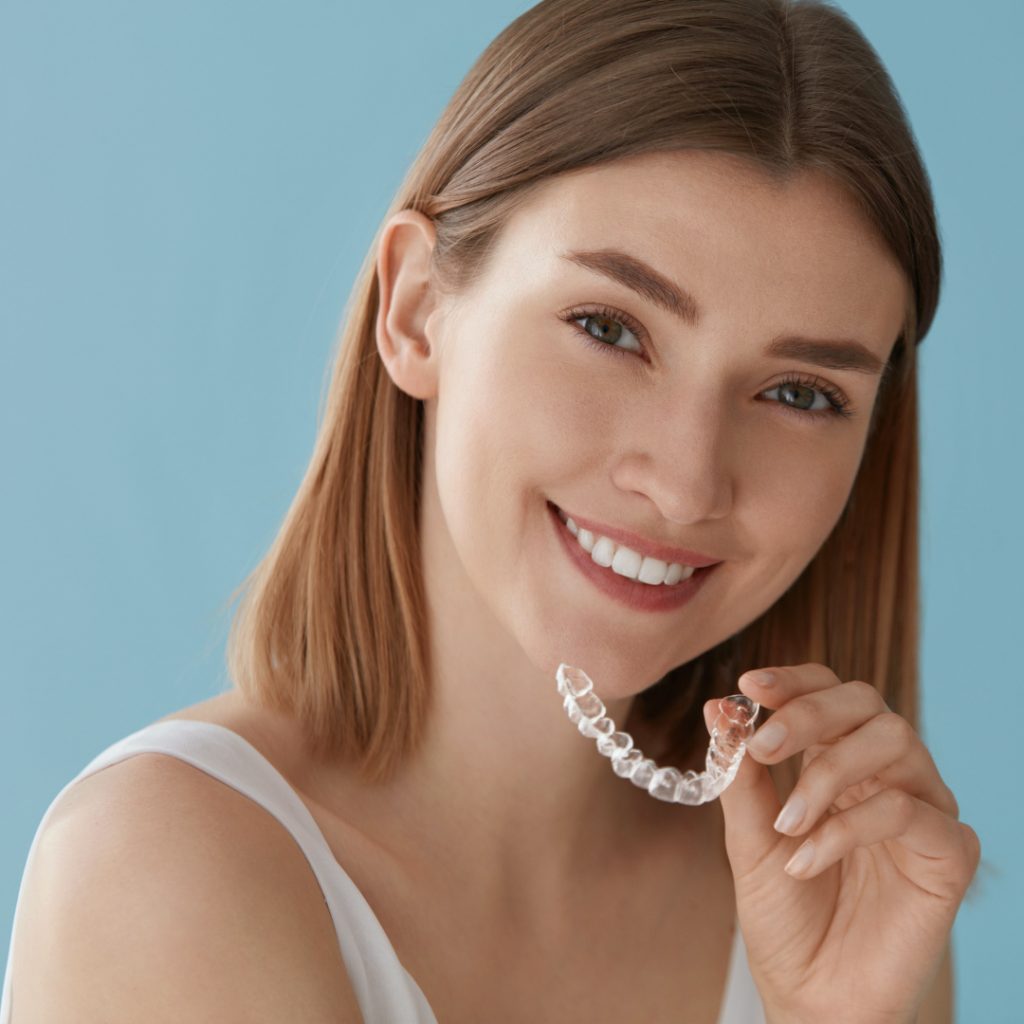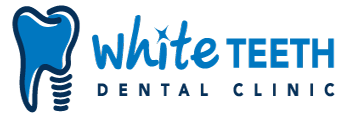Orthodontics
Orthodontic

Orthodontic is a branch of dentistry which involves fixing the teeth and jaw in the wrong position misaligned teeth and intertwined teeth will make it difficult to clean. And there is a risk of premature tooth loss due to tooth decay and gum disease It also causes pressure on the muscles that are used to chew, which can cause headache. Pain in the joints, jaw, neck, shoulders and back can result. Teeth that are protruding or not in the right position can also damage your personality.
How do we know that we need braces?
The dentist or orthodontist will make a diagnosis using medical and dental history. Examination in the dental clinic and x-ray whether orthodontics is required.
What kind of teeth have to be braces?
Unusual occlusion (Malocclusions) that should be treated with orthodontics are as follows;
1. Protruding Teeth
Upper front teeth or lower front teeth protruding more than usual, causing some lips to not be able to close the lips completely with front teeth coming out upset personality risk that the front teeth will be chipped or broken from an accident.
2. Crowding
Disorderly teeth may overlap both outside and inside Is a collection of food waste difficult to clean, bad breath, at risk of gingivitis And may lead to tooth decay some people are fangs that are very high. When smiling, it was like a point of view let others only look at the teeth.
3. Crossbite, Cross Bite
Single or multiple lower teeth straddle across the upper teeth In children, if left untreated the jaw may be of unusual size. Causing a concave face and a deformed face and may cause abnormalities that can be a jaw joint if the children have straddled teeth should hurry to see an orthodontist at an early age to find a cure early.
4. Spacing
The characteristic is the side of one tooth not aligned with the side of the next tooth therefore creating space between the teeth blur when he was spitting annoy because food scraps will get stuck in the niche of the teeth, hurt the gums, because they may be exposed to hard food scraps, such as bones, to follow the teeth.
5. Deep Bite
The front anterior teeth are attached too much to the lower anterior teeth. When smiling, the teeth of the lower teeth are rarely seen. Make him look short-haired looks like an aged person the danger of deep teeth is lower front teeth will continuously hit the base of the front teeth on the inside after a long time, it causes the teeth to feel sore, sensitive teeth, causing damage to the gums and front teeth. Until may need to have root canal treatment.
6. Open Bite
When gnashing of the front teeth and the lower teeth will be apart causing bite without food some words are unclear. In many cases when smiling, will see a hollow like opening your mouth all the time upset personality.
7. Missing teeth
The teeth disappear because the teeth do not grow naturally. But buried in the jawbone if the offspring cannot finish their teeth should bring to see an orthodontist because it may help to pull the implanted teeth up our children do not have to be a passer-by. No need to wear dentures or implants.
8. Tooth accident
If you have to lose some teeth Because of an accident don’t lose hope should consult an orthodontist because it might help to pull other teeth To close the gap of the lost tooth without having to wear dentures or if other teeth cannot be pulled and closed may be braces to prepare the area for implant dentures or dental implants.
9. Abnormal jaw
In some people, the occurrence of malocclusion. Caused by the jawbone together, causing the chin to protrude, the orthodontics alone cannot be fixed. Needing braces together with jaw surgery the treatment will be a collaboration between orthodontists and dentists, oral surgery Is a major surgery in the hospital, requiring general anesthesia and there is a risk Same as general surgery.
Orthodontic procedures
Orthodontics is the treatment of disorders of the body. Not cosmetic surgery not a manicure and hair treatment, and most importantly, braces are a long continuous treatment. Therefore patients must be ready both time and money.
Orthodontic procedures In general, there will be the following ;
- Preliminary examination To find an indication that should be orthodontic or not.
- Mouth prints and x-rays To bring the data to diagnose and treatment plan.
- Treat oral diseases, scaling, fillings, teeth, etc. where necessary before attaching the tool.
- Attach braces.
- Adjust the tool every 4-8 weeks for 2-4 years to move the teeth to the right position.
- During braces there may be scaling, tooth filling, tooth extraction, root canal treatment, wisdom tooth removal, tooth extraction, implantation or others as needed.
- Removing braces and put in the retainers or tooth stabilizer to prevent the teeth from moving back to their original positions.
Types of braces Divided into 2 major types of orthodontics, which are ;
1. The tool is firmly fixed.
2. Removable tool type.
In which each category will have different types of tools for us to choose according to the needs.
1. The tool is firmly fixed
Damon Damon Orthodontics

Orthodontic braces using Damon or 3M Clarity SL braces are braces that do not require a rubber band. (Self-ligation Braces) make teeth move faster. And is also an orthodontic system that helps to shorten the duration of treatment than the time required for normal steel braces reduces pain in treatment as well because orthodontists can move teeth more easily than conventional iron. Dentists therefore use less force to move their teeth. Patients therefore feel less pain after adjusting the equipment than normal braces which is different from ordinary tools which are Is a braces specially designed to be able to move teeth by working with the wire.
Metal braces
Is braces with metal tools ะhe braces are much smaller than before and choosing the color of rubber that is attached to the braces helps to present your personality. Make it more fun with orthodontics. This type of orthodontic treatment is a standard practice that is commonly used. Most patients will choose this type of orthodontics. See an orthodontist every 4-6 weeks to adjust the braces and this type of orthodontics costs less than other types of orthodontics. Treatment time depends on each case. Which normally takes about 2-3 years.
2. Removable tool type
Invisalign clear braces

Invisalign clear orthodontics is a type of braces that does not require orthodontic braces on the teeth. The device is a thin, clear sheet of material made from laboratories in the United States. These devices will be created by scanning the teeth together with the X-ray of the bone and facial structure. So that dentists can design an appropriate treatment plan together with using modern computer software in order to create the most orthodontic equipment for each patient. The clear braces are removable and self-contained, suitable for those who do not want to wear fixed braces. Most customers come to those who want to braces but do not want to install braces. Transparent braces cost 2-3 times the cost of orthodontics, depending on the severity of the tooth stacking. The outstanding point of invisalign is that the tool is clear and makes it difficult to see. Including being able to remove the tools by yourself if necessary, such as when eating or when brushing teeth allowing the orthodontics to have a better experience than other types of orthodontics.
Retainer
Retainers come in many forms for orthodontics to choose from. This depends on the doctor’s discretion and the satisfaction of the orthodontist as follows:
- Single wire retainer made from acrylic sheets that fit the palate which is welded with metal that looks like a loop for covering the teeth to secure the retainer from the position which should be removed before eating and regularly cleaned.
- Clear retainer made from clear plastic resembling the upper and lower tooth panels can be removed for cleaning, just like a single-wire retainer but more easily broken since it’s plastic.
- Treacher type permanent the doctor may advise people at risk of falling teeth to attach this retainer to the front lower tooth panel which may need to be kept for 2-3 months.
How to clean the retainer
Dirt, bacteria And oral fungus Will accumulate on the urethane if cleaning is neglected Which may result in the discolored discoloration and unwanted odor As well as may cause subsequent oral infections It is important to regularly wash and clean the correct way that is suitable for each type of retainer. The single-wire retainer and the transparent retainer can be removed as well. There are cleaning methods as follows;
- After removing, wash the dirt that is retainer immediately because leaving it may make it harder to clean.
- Use a soft-bristled toothbrush with warm water mixed with a small amount of toothpaste or dishwashing liquid. Brush the retainer gently after every meal.
- Use a small cotton swab to wipe the groove in the retainer, which is difficult to clean with a toothbrush.
Consult your dentist before soaking the retainer with mouthwash or denture cleaner and always strictly adhere to the advice of the doctor the dentist may recommend special solutions for cleaning the retainer. To get rid of ingrained stains that are difficult to clean the permanent retainer is a device that attaches to the teeth at all times. Cannot be removed should always use dental floss to remove dirt which can comply with the following recommendations.
- Thread the floss between the retainer and the lower teeth. The floss may be used to help make the thread easier.
- Grasp each floss and pull the floss up and down between the teeth to remove dirt by pulling dental floss down to the edge of the gum too people who have problems using dental floss should consult a dentist. To receive advice on using dental floss correctly.
After using the retainer, the gums or the tissues in the mouth become swollen, red, or have any abnormalities in the mouth. See a doctor immediately.
Tips for using the retainer
Users should avoid any factors that may result in damage to the retainer and follow the instructions below to maintain the lifespan of the retainer for as long as possible.
- Keep the retainer away from heat-prone areas such as microwaves, hair dryers, and gas stoves, as well as avoiding the retainer using hot water.
- Soak the retainer in clean water after removing because if left to dry, it may cause the retainer to break more easily than usual.
- void cleaning the retainer with chemicals containing substances such as mouthwash, denture cleaner, etc. If necessary, soak the retainer into the said solution. To mix with warm water first To dilute the concentration and should not be soaked for too long.
- Clean the retainer box with warm water mixed with soapy water. Then wash with water and wipe dry.
- If the re-tenor is broken, deformed, or has dirt that cannot be washed should see a dentist for a new one as well as changing the retainer according to the time recommended by the doctor.
The single-wire retainer typically lasts for 5-10 years, while the clear retainer will last only about 6 months to 2-3 years.
